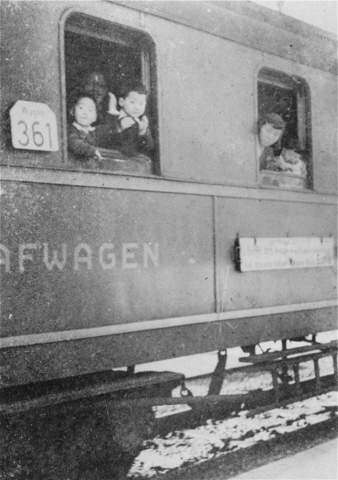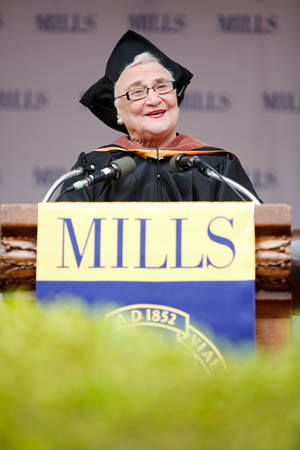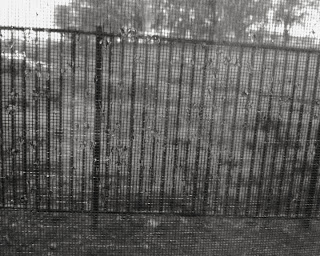
The Sugihara family headed for Berlin, Sept. 4, 1940. Courtesy of USHMM & Hiroki Sugihara.
I can’t get this image out of my head: Japanese diplomat Chiune Sugihara leaning out the window of his departing train, illegally signing off on visas to help thousands of Jews escape Hitler’s deathly grasp.
The Huffington Post captures the scene well: “The Japanese government closed the consulate, located in Kovno [aka Kaunas]. But even as Sugihara’s train was about to leave the city, he kept writing visas from his open window. When the train began moving, he gave the visa stamp to a refugee to continue the job.”
In Conspiracy of Kindness, a PBS film documenting Mr. Sugihara’s remarkable story, his wife, Yukiko Sugihara described their last days in Lithuania:
He was so exhausted, like a sick person. Even though he was ordered to go to Berlin, he said he couldn’t make it to Berlin and suggested we go to a hotel and rest before leaving. When we got to the hotel, the Jewish people came looking for us there. So he wrote some more visas in the hotel.
The next day when we got to the train station, they were there too. So he wrote more visas on the platform until the train left. Once we were on board, they were hanging on the windows and he wrote some more. When the train started moving, he couldn’t write any more. Everyone was waving their hands. One of them called out, ‘Thank you Mr. Sugihara, we will come to see you again,’ and he came running after the train. I couldn’t stop crying. When I think about it even now I can’t help crying.
From July 31 through August 28, 1940, Mr. Sugihara issued at least 2,139 visas; in many cases entire families were able to escape on a single visa.

Chiune Sugihara, Kaunas, Lithuania, 1940
Credit: USHMM, courtesy of Hiroki Sugihara
There is so much more to his story, much of it heartbreaking, but certainly worth knowing. PBS produced a timeline of his life with just the right amount of details to give us a sense of who this courageous man was. When he was sent to Prague in 1941 after Berlin, he boldly issued another 69 visas.
None of this was without consequence. Upon his return to Japan in 1947 (he and his family were interned in Russia for 18 months after the war ended), he was forced to resign and lived the next 25 years in obscurity, taking on menial odd jobs including selling light bulbs door to door.
All this time Mr. Sugihara wondered if his visas actually worked. Although many survivors attempted to locate him, no one succeeded until 1968, when visa recipient Joshua Nishri, by then an Israeli diplomat, got in touch with him.
It wasn’t until 1985 though, after amassing hundreds of survivor testimonies attesting to Mr. Sugihara’s brave acts of kindness, that Israel’s Holocaust museum, Yad Vashem, declared him “Righteous Among Nations,” and planted a tree in his name. A park in Jerusalem was also named for him.
The timeline concludes with his death in 1986 at the age of 86, “…having proved beyond doubt that one person can make a difference. By some estimates, more than 40,000 people alive today have him to thank for their very existence. Sugihara once said, recalling his decision in Lithuania in 1940, ‘I may have disobeyed my government, but if I didn’t I would be disobeying God.’ ‘In life,” he said, ‘do what’s right because it’s right, and leave it alone.'”
In 2000, on the 100th anniversary of his death, Japan formally acknowledged his courageous deeds. According to the Los Angeles Times, “Foreign Minister Yohei Kono apologized to Sugihara’s widow, Yukiko, for any ‘troubles’ that Sugihara had suffered and unveiled a plaque at the ministry’s diplomatic record office, where Sugihara’s picture, his story and the list of people to whom he issued visas are now prominently displayed.”
The New York Times referred to him as the “Japanese Schindler.” No disrespect to Mr. Schindler, but Mr. Sugihara saved more lives. (I know that sounds petty and somewhat callous, but hey, it’s true.) Perhaps Mr. Schindler should be called the German Sugihara?
If you’re interested in learning more, have at it:















